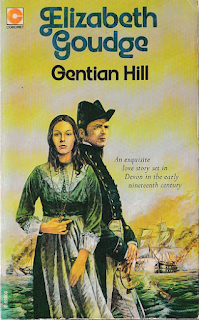I nicked -- ahem, borrowed --
The Franchise Affair from the aged care library, too. This edition is from 1971, so the book was already over twenty years old when this came out. In many ways,
The Franchise Affair is the most antiquated of Josephine Tey's novels (the ones I've read, anyway).
The Franchise Affair has a great premise -- a fifteen year old girl, missing for a month, reappears and claims to have been kidnapped and held captive by a pair of women who live in a big old isolated house. She describes the interior, the furniture, the women themselves, and their car, without an error (well, maybe with one error...) -- and yet the women, an eccentric mother and daughter, insist on their innocence. Who is telling the truth?
We are very quickly led to believe the two women over the girl; the tension of the plot resides in whether the public and the legal system will uncover the truth and exonerate the Sharpes. It's very odd, and uncomfortable, with a modern sensibility, to read the venom heaped by our detecting hero, solicitor Robert, on the head of young Betty Kane. She is painted as a complete villain, a scarlet lying Jezebel who well deserved the beating she received before her reappearance. But I can't forget that she's only a child, and I don't find it so easy to write her off as irredeemably wicked. It seems she was just born that way, as her adoptive mother is presented with huge sympathy. It's weird to read a book that does contain a range of complex, interesting female characters right alongside a set of one-dimensional stereotypes: a doting maiden aunt, a nurturing mother-figure, a hard-boiled 'modern' woman, and of course, Betty herself, apparently destined for a career in prostitution.
As in Miss Pym Disposes, solving the mystery isn't really the central point here. It's more about (ironically) combating first impressions and digging under pat assumptions. If the author had followed her characters' example more closely, The Franchise Affair would be a better book.






























